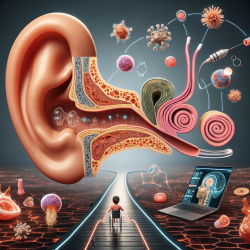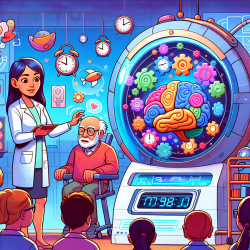Introduction
In the world of speech-language pathology, creating effective communication strategies for children with complex needs is crucial. One such challenge is Complete Locked-In Syndrome (CLIS), a condition where individuals lose all voluntary muscle control, including eye movements, often due to late-stage amyotrophic lateral sclerosis (ALS). This blog post explores recent research findings on brain dynamics in CLIS and how they can inform innovative therapeutic approaches for children.
Understanding CLIS and Brain Dynamics
CLIS presents a unique challenge in communication as traditional methods relying on motor responses become ineffective. The recent study, "Altered brain dynamics index levels of arousal in complete locked-in syndrome," provides valuable insights into the neural mechanisms underlying CLIS. The research highlights the potential of EEG-based measures, such as power-law exponent (PLE) and Lempel-Ziv complexity (LZC), as biomarkers for identifying arousal levels in CLIS patients.
These measures help to quantify the brain's dynamic states, offering a window into the consciousness levels of individuals with CLIS. The study found that high PLE and low LZC are indicative of altered arousal states, which can be crucial for determining optimal communication times and strategies.
Implications for Speech-Language Pathologists
For practitioners at TinyEYE and beyond, these findings open new avenues for enhancing communication outcomes for children with CLIS. Here are some practical steps to consider:
- Incorporate EEG-Based Assessments: Utilize EEG assessments to monitor brain dynamics in children with CLIS. This can help identify optimal times for communication attempts, ensuring that interventions are aligned with the child's arousal states.
- Develop Personalized Communication Strategies: Tailor communication approaches based on the individual's brain dynamics. Understanding fluctuations in arousal can guide the timing and method of communication, enhancing effectiveness.
- Collaborate with Neuroscientists: Engage in interdisciplinary collaborations to integrate cutting-edge neuroscience research into therapeutic practices. This can lead to the development of innovative communication tools and techniques.
- Advocate for Research and Development: Support ongoing research into brain dynamics and CLIS to continuously improve therapeutic interventions. Encourage funding and resources for studies that explore new communication technologies and methodologies.
Encouraging Further Research
The study's findings emphasize the importance of continued research into the neural correlates of consciousness in CLIS. By validating PLE and LZC as biomarkers, researchers can further explore their application in therapeutic settings. Practitioners are encouraged to stay informed about the latest developments and consider participating in research initiatives to advance the field.
Conclusion
By leveraging insights from the study on altered brain dynamics in CLIS, speech-language pathologists can enhance communication strategies for children with complex needs. Embracing data-driven approaches and fostering collaboration between disciplines will pave the way for more effective interventions, ultimately improving the quality of life for children with CLIS.
To read the original research paper, please follow this link: Altered brain dynamics index levels of arousal in complete locked-in syndrome.










